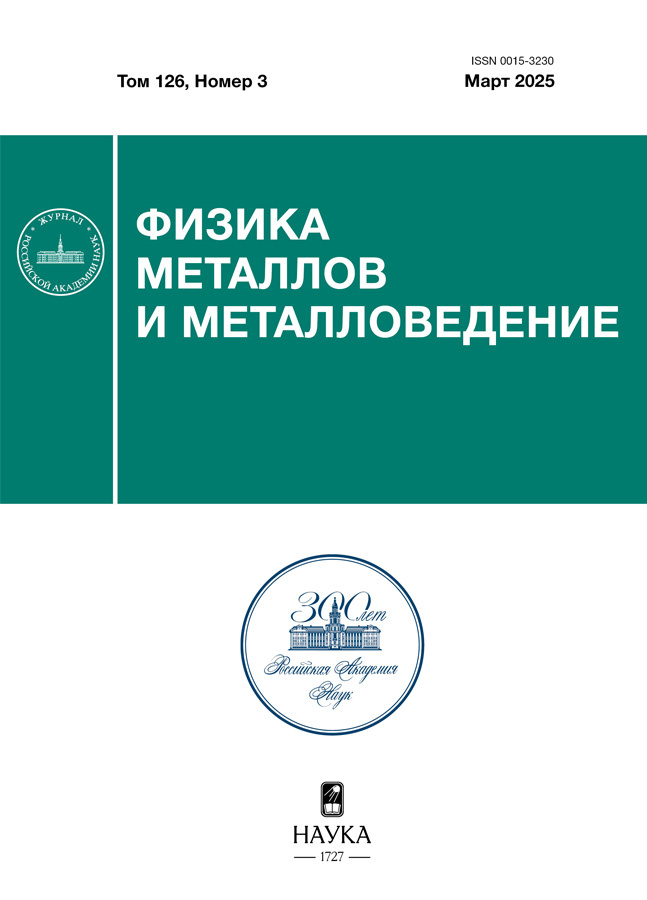Model of transient creep for a ferritic-martensitic steel based on the modified θ-projection method
- Авторлар: Kolotovkina А.V.1, Zborovskii V.G.2,3, Leonteva-Smirnova M.V.1
-
Мекемелер:
- Academician A.A. Bochvar High-Tech Research Institute of Inorganic Materials
- Lebedev Physical Institute of the Russian Academy of Sciences, Troitsk Branch
- National Research Center “Kurchatov Institute”
- Шығарылым: Том 126, № 3 (2025)
- Беттер: 342-353
- Бөлім: ПРОЧНОСТЬ И ПЛАСТИЧНОСТЬ
- URL: https://rjpbr.com/0015-3230/article/view/686729
- DOI: https://doi.org/10.31857/S0015323025030104
- EDN: https://elibrary.ru/IMZOEU
- ID: 686729
Дәйексөз келтіру
Аннотация
The paper presents the developed model for predicting the behavior of a ferritic-martensitic steel during all creep stages. A modified θ-projection method is proposed as a solution. The main advantages of the method are abilities to model creep curves for a wide range of temperatures and stresses (which reduces the need for long-term run tests); to validate calculations by determining time to failure; to predict a steady-state creep rate. Despite the usefulness of the proposed approach, certain limitations are noted that result in modeling uncertainties. Higher accuracy and robustness can be achieved using a "mechanical equation of state equation" model of Rabotnov type.
Негізгі сөздер
Толық мәтін
Авторлар туралы
А. Kolotovkina
Academician A.A. Bochvar High-Tech Research Institute of Inorganic Materials
Хат алмасуға жауапты Автор.
Email: AVKolotovkina@bochvar.ru
Ресей, Moscow, 123098
V. Zborovskii
Lebedev Physical Institute of the Russian Academy of Sciences, Troitsk Branch; National Research Center “Kurchatov Institute”
Email: AVKolotovkina@bochvar.ru
Ресей, Troitsk, Moscow, 108840; Moscow, 123182
M. Leonteva-Smirnova
Academician A.A. Bochvar High-Tech Research Institute of Inorganic Materials
Email: AVKolotovkina@bochvar.ru
Ресей, Moscow, 123098
Әдебиет тізімі
- ASME Boiler & Pressure Vessel Code, Section III – Rules for Construction of Nuclear Facility Components – Section II – Part D Properties (Customary). ASME 2019 Edition.
- Сапунов В.Т. Прогнозирование ползучести и длительной прочности жаропрочных сталей и сплавов ЯЭУ. М.: НИЯУ МИФИ, 2015. 136 с.
- Riedel H. Fracture at High Temperature. Berlin: Springer, 1987. 418 p.
- Булыгин И.И., Голубовский Е.Р., Трунин И.И. Прогнозирование характеристик ползучести сплавов для ГТД // Проблемы прочности. 1978. № 6. С. 19–21.
- Работнов Ю.Н. Ползучесть элементов конструкций. М.: Наука, 1966. 753 с.
- Качанов Л.М. Теория ползучести М.: ФИЗМАТЛИТ, 1960. 455 с.
- Evans R., Parker J., Wilshire B. Recent advances in creep and fracture of engineering materials and structures. B. Wilshire and D.R.J. Owen. Pineridge Press, 1982. 135.
- Evans R. Statistical scatter and variability of creep property estimates in θ projection method // Mater. Sci. Technol. 1989. V. 5. P. 699–707.
- ГОСТ 10145–81. Металлы. Метод испытания на длительную прочность.
- Jeyaraj A., Vijayanand V.D., Ganesan V. Grain size effect on creep properties of 304HCu SS and modelling of creep curves using modified theta projection approach // Trans. Ind.National Academy of Engineering. 2021. V. 10.
- Peng Yu, Weimin Ma. A modified theta projection model for creep behavior of RPV steel 16MND5 // J. Mater. Sci. Techn. 2020. V. 47. P. 231–242.
- Evans M. Sensitivity of the theta projection technique to the functional form of the theta interpolation/extrapolation function // J. Mater. Sci. 2002. V. 37. P. 2871–2884.
- Деммель Дж. Вычислительная линейная алгебра. М.: МИР, 2001. 430 с.
- Perez J. An alternative method of calibration and prediction for the theta-projection model // ETD Collection for University of Texas. 2019. V. 69.
- Srinivasan V., Vanajal J., Choudhary B. Modeling of creep deformation behaviour of RAFM steel // Trans. Ind. Institute of Metals. 2016. V. 69. P. 567–571.
Қосымша файлдар
















